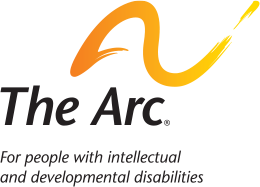2015: A Year in ABLE
This month, states are beginning to launch ABLE Act programs and some people with disabilities can now take advantage of this new opportunity to build assets while preserving eligibility for means-tested federal benefits. Let’s take a look at what’s happened over the last 18 months.
As 2014 closed, Congress enacted the Stephen Beck, Jr. Achieving a Better Life Experience (ABLE) Act. This legislation recognized the extra costs of living with a disability and is anticipated to positively impact the economic futures of people with disabilities and their families. Lead sponsors in the Senate were Bob Casey (D-PA) and Richard Burr (R-NC); other key senatorial champions were Ron Wyden (D-OR) and Orrin Hatch (R-UT). ABLE was introduced in the House of Representatives by Ander Crenshaw (R-FL) and leading co-sponsors were Chris Van Hollen (D-MD), Cathy McMorris Rodgers (R-WA), and Pete Sessions (R-TX) with critical support from Kevin McCarthy (R-CA). By December 3, 2014, it had garnered 380 of the 435 U.S. representatives as co-sponsors and passed the House by a vote of 404-17. The Senate version of ABLE secured 78 co-sponsors, making ABLE one of the most bipartisan laws ever passed by the U.S. Congress. On December 19, 2014, President Obama signed the ABLE Act into law.
This law will ease financial strains through the use of tax-advantaged savings accounts. Qualifying individuals would be those who: 1) experience disability onset before age 26, and 2) either are a Social Security disability program beneficiary or submit a disability certification (meet certain criteria for the Social Security Administration’s (SSA) definition of disability and possess a written diagnosis from a licensed physician). Account funds may be used for a variety of disability-related purposes, such as basic living expenses; education; housing; transportation; employment training and support; assistive technology and related services; personal support services; health, prevention, & wellness expenses; legal, financial, & administrative services; oversight and monitoring; as well as funeral & burial expenses, all the while protecting eligibility for means-tested federal benefits, including SSI and Medicaid.
The law established new requirements which apply to ABLE account holders who are also SSI recipients. Once an account exceeds $100,000, an individual is placed into a special SSI suspension period with no time restrictions. During this time, the beneficiary’s Medicaid eligibility will remain intact but cash benefits will be suspended. When ABLE funds once again dip below $100,000, SSI is automatically reinstated.
The law also established requirements specific to Medicaid eligibility. The $100,000 limit that applies to the SSI program does not apply to Medicaid. However, upon the beneficiary’s death, remaining funds in the account may be required to pay back the state for Medicaid services provided during the individual’s lifetime.
Shortly after ABLE’s passage on the federal level, a legislative frenzy to create ABLE programs ensued at the state level. Responding to this enthusiasm, in March 2015 the Internal Revenue Service (IRS), advised that states could move forward with these legislative plans even though federal regulations were not yet in place. The agency assured that once regulations were published, there would be a “transition relief” period, which would provide “sufficient time” for states to execute changes which would ensure federal compliance.
In June 2015, the Department of Treasury and the IRS published proposed regulations. A public comment period followed, and in October, advocates voiced their concerns at a public hearing held in Washington, DC. Treasury and IRS officials took advocates’ words to heart, and in November, the entity released interim guidance that lessened some administrative burdens and program costs while creating a more accessible program. Among other things, participants would no longer be required to provide medical documentation upon opening an account.
Lastly, in December 2015, a major revision to the original ABLE legislation was signed in law, lifting the residency requirement, thus permitting states to offer national rather than state-resident only programs.
In the meantime, people with disabilities and their advocates sought further changes that would widen the scope of the law. As a result, in March 2016, three new ABLE improvement bills were introduced. Each seeks to strengthen a different aspect of the original bill. Below is a short summary of each:
- The ABLE Age Adjustment Act would raise the age limit for eligibility for ABLE accounts to individuals disabled prior to age 46. The Senate bill (S. 2704) is sponsored by Senator Bob Casey while the House version (H.R. 4813) is sponsored by Representative Chris Van Hollen.
- The ABLE Financial Planning Act would allow tax-free rollovers between an existing 529 college savings account and an ABLE account. Senator Bob Casey has introduced the Senate bill (S. 2703), while Representative Ander Crenshaw is sponsoring the House version (H.R. 4794).
- The ABLE to Work Act would allow individuals to exceed the annual contribution limit and save more money in an ABLE account if the individual earns income. The Senate bill (S. 2702) is sponsored by Senator Richard Burr while the House version (H.R. 4795) is sponsored by Representative Ander Crenshaw.
Today over 90% of the states have enacted their own ABLE act and most are focusing on implementation. Opening their ABLE programs earlier this month, Ohio and Tennessee are leading the way; Nebraska is expected June 30; and Florida is set to offer accounts July 1. With the exception of Florida, all will be national programs. It is anticipated that up to 40% of the remaining states that have enacted legislation will have programs active by year-end. For more information on where a particular state is in the process, please see The Arc’s ABLE implementation chart.
Update: On June 30, 2016, Nebraska opened their ABLE program.
Update: On July 1, 2016, Florida opened their ABLE program








